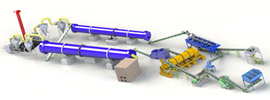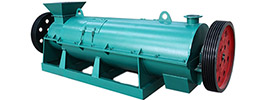The combined use of organic fertilizers and chemical fertilizers should leverage the strengths of both through scientific ratios and methods. Below is a detailed guide:
I. Core Principles for Combination
- Flexible Adjustment of Ratios
- Basic Ratio: A 5:5 mix of organic to chemical fertilizers is recommended to balance sustained nutrient release with rapid crop uptake.
- Organic-Dominant Approach: For soil restoration or in poor soils, increase the organic fertilizer ratio to 3:1 or 4:1 (e.g., 1-2 tons/acre of composted straw + minimal chemical fertilizers for dryland corn in northern regions).
- Crop-Specific Adjustments:
- Fruit Trees: Apply 3,000 kg/acre of organic fertilizer (e.g., composted livestock manure) + balanced compound fertilizers as base fertilizer.
- Vegetables: Due to high nutrient demands, use 3-5 tons/acre of organic fertilizer combined with high-potassium chemical fertilizers (e.g., NPK 12-8-25).
- Field Crops (e.g., rice, wheat): Apply ≥1,500 kg/acre organic fertilizer + urea/phosphate as topdressing.
- Layered Fertilization Method
- Bottom Layer: Apply organic fertilizer (e.g., composted cow manure) at 30-50 cm depth to improve soil structure.
- Middle Layer: Add phosphate fertilizers (e.g., superphosphate) near roots due to their limited mobility.
- Top Layer: Use quick-release chemical fertilizers (e.g., urea) at 10-15 cm depth for rapid absorption.
II. Specific Combination Strategies
- Human Manure + Ferrous Sulfate/Superphosphate
- Odor Control & Nitrogen Retention: Mix 100 kg human manure with 500 g ferrous sulfate to reduce nitrogen loss (ideal for fruit orchards).
- Phosphorus Enhancement: Combine 100 kg human manure with 5 kg superphosphate, age for 3-10 days, and apply.
- Plant Ash + Superphosphate
- Efficient Foliar Spray: Soak 6 kg plant ash in 30 kg water + 2 kg superphosphate for 6 hours, then use the filtrate as a potassium-rich foliar spray.
- Compost + Ammonium Bicarbonate
- Biological Potassium Fertilizer: Chop weeds/straw, mix with 0.5-1% ammonium bicarbonate and manure, compost until fully decomposed, and apply as potassium-rich vegetable fertilizer.
- Livestock Manure + Superphosphate
- Nitrogen Preservation & Maturation: Blend 20% superphosphate with manure, stack for 20 days to reduce nitrogen loss and accelerate decomposition (suitable for fruit tree base fertilizer).
III. Critical Precautions
- Ensure Organic Fertilizers Are Fully Composted
- Uncomposted manure (e.g., chicken/cow dung) contains pathogens and may burn roots during fermentation. Compost to ≥60°C for 7 days to meet safety standards.
- Chemical Fertilizer Selection & Timing
- Targeted Formulations: Use nitrogen-rich fertilizers (e.g., urea) for leafy vegetables early in growth; high-potassium formulas (e.g., potassium sulfate) for fruiting stages.
- Staged Application: Apply chemical fertilizers as base fertilizer 1 week prior to planting; topdress during critical growth stages (e.g., rice tillering).
- Avoid Incompatible Mixtures
- Do Not Mix Directly: Commercial organic fertilizers and chemical fertilizers (e.g., urea) may cake; apply separately.
- pH Neutrality: Avoid mixing acidic fertilizers (e.g., superphosphate) with alkaline materials (e.g., plant ash) to prevent nutrient loss.
- Dosage & Environmental Safety
- Moderation: Excessive organic fertilizer can cause soil nitrate accumulation; reduce chemical fertilizer use by 30-50% via combined applications.
- Pollution Control: Chemical fertilizer efficiency is only 30-35%; overuse risks eutrophication. Supplement with foliar sprays for micronutrients.
IV. Long-Term Benefits
- Soil Health: Three years of organic fertilizer (e.g., bio-fertilizers + composted straw) can increase soil organic matter by 1% and water retention by 20-30%.
- Yield & Quality: Balanced fertilization reduces chemical inputs while enhancing disease resistance (e.g., 40% lower tomato blossom-end rot).
This approach ensures stable yields, gradually restores soil health, and aligns with sustainable agriculture goals.
 Send us a Email
Send us a Email Wulong Industrial Cluster
Wulong Industrial Cluster Have any question?
Have any question?



















